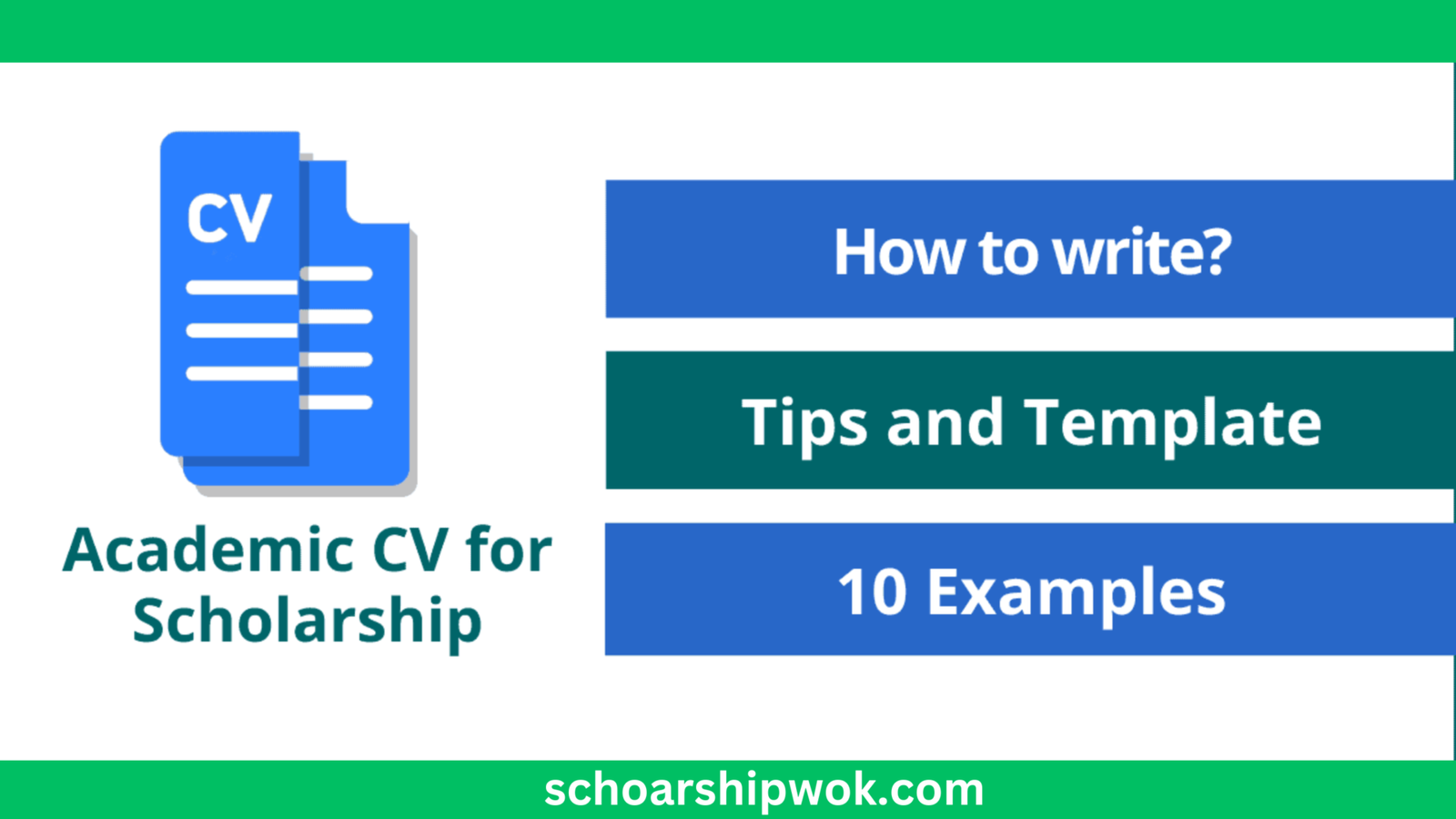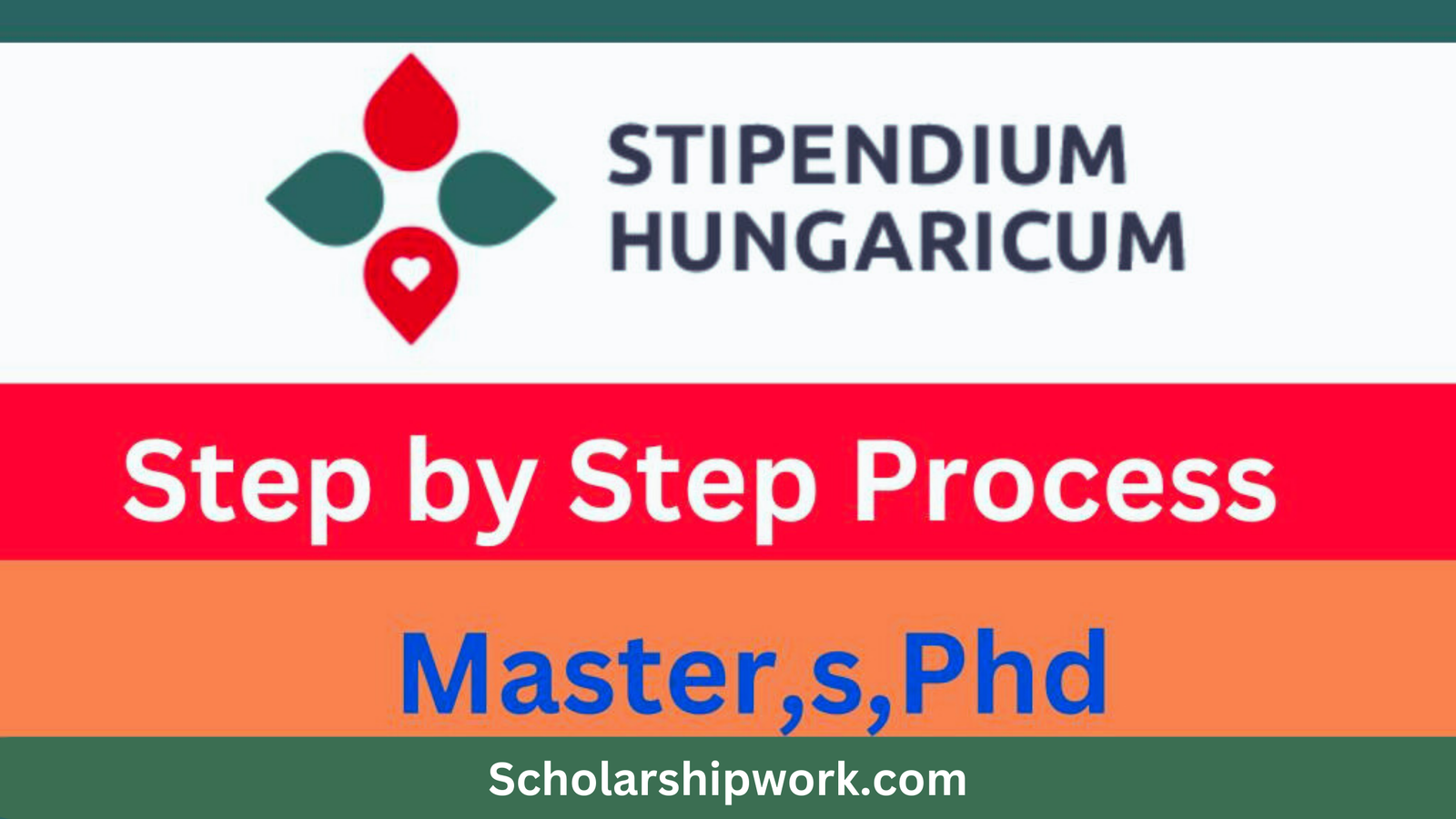When seeking a scholarship, your CV serves as the initial screening tool to ensure that you meet the essential criteria of the application, that your background is relevant to the program you are interested in, and that you possess academic, professional, and personal qualities that make you a strong candidate.
When applying for a scholarship, keep your academic CV concise and to the point. Use Times New Roman font and formatting techniques such as bullets, bold text, and capital letters to highlight important details. Arrange the information in chronological order. Avoid clichés and instead focus on showcasing your unique qualities.
An effective academic CV is crucial in grabbing the scholarship provider’s interest, paving the way for the Motivation Letter to further persuade them of your suitability for the scholarship. A poorly constructed academic CV could result in a scholarship rejection.
The CV holds significant importance in the evaluation process, making it one of the most crucial documents. Drawing from our successful scholarship wins and experience in guiding others through their application processes, we aim to offer valuable tips.
Table of Contents
Reflect and Brainstorm your Academic CV
Prior to commencing the writing of your resume, it is essential to conduct a thorough self-evaluation to identify and select the professional, academic, and personal experiences that you will include in your document.
At first, it’s important to collect a wealth of information to gain a comprehensive understanding of your strengths, and then carefully decide which ones to showcase and how. Keep in mind that the scholarship provider has the ultimate decision-making power, so it’s crucial to research their preferences and the qualities they value. With this in mind, carefully pick out and emphasize the most pertinent skills and experiences in your CV.
To initiate your research, thoroughly review the scholarship’s description and eligibility criteria. Additionally, examine the profiles of current scholars benefiting from the same program. Often, scholarship providers release articles or institutional videos featuring these scholars sharing their experiences, providing an opportunity for you to assess their backgrounds.
As you conduct your research, make sure to note down important keywords in a list. This will guide you in tailoring your CV (resume) to highlight the most relevant aspects. For instance, it will indicate whether you should emphasize academic achievements, professional expertise, or personal attributes and experiences. Additionally, it can assist in determining whether to showcase yourself as a researcher, leader, innovator, or socially conscious individual.
How to Organize Academic CV for Scholarship?
Every resume should consist of three main components: contact details, educational background, and work history. However, I suggest incorporating additional sections to highlight pertinent attributes, such as: Certifications and accolades, Volunteer work and extracurricular experiences, Proficiency in software and language skills.
Contact:
In the header or at the top of the page, it is essential to display your complete name and contact details, including address, phone number, and email. It is important to refrain from using terms like CV, Curriculum Vitae, or Resume as they may detract from a professional appearance.
Education:
Typically, it takes precedence as it serves as evidence that you satisfy the fundamental entry criteria. For instance, if you are seeking admission to a PhD program, you must have already obtained a Master’s degree; or if you are applying for a master’s program, you should have completed your undergraduate degree.
- Title: Bachelor of Science in Computer Science
- Institution: University of California, Los Angeles
- Year of Graduation: 2020
- Location: Los Angeles, USA
Work Experience:
Incorporate achievements and measurable results in addition to task descriptions to showcase the impact of your work and demonstrate awareness of your professional footprint. Emphasize the significance of your contributions without relying solely on task lists.
As an alternative to mentioning sales and event coordination, it’s more effective to indicate that I achieved a 20% increase in sales compared to the previous year and successfully managed events with budgets exceeding $500,000. It’s important to consistently highlight verifiable accomplishments.
Languages:
Display your language proficiency as either native, basic, intermediate, or advanced without using complex numerical scales that may confuse the reader.
Personal Skills:
When highlighting your technical abilities, be sure to also showcase your personal skills. This section is crucial for enabling the reader to swiftly identify that you possess the desired qualifications. Moreover, it allows you to demonstrate self-awareness and a well-rounded skill set.
Other Key Sections:
If you have any published work, received awards, or earned certificates that enhance your formal education, consider creating a section to showcase these accomplishments. If possible, include links (DOI numbers) to your publications. Likewise, if you have participated in extracurricular activities or volunteered, it’s beneficial to organize them in a separate section to illustrate your initiative and community involvement.
Do I have to include Professional Profile in Academic CV for Scholarship?
Some individuals opt to begin their CV with a professional profile as an introductory section. However, it may end up duplicating the content of the motivation letter. Due to the need for brevity in a CV, I recommend omitting the professional profile. If included, limit it to one paragraph or five lines of text.
Do I have to include my picture in Academic CV for Scholarship?
When it comes to including a photo in your CV, the appropriateness can vary based on the job, company, and location you’re targeting. However, I generally advise using a professional photo that allows the reader to form an impression of you. Opt for a picture where you exude a warm and cheerful demeanor, while steering clear of contrived smiles or stern expressions.
How to write a winning CV for Scholarships?
A poorly organized academic CV could result in being denied a scholarship. We have outlined 8 methods for ensuring that your academic CV (resume) conveys strength and effectiveness.
- Your CV may only receive 30 seconds of attention, so it’s important to keep it concise and limit it to 2 pages due to the high volume of applications.
- Use bullets, bold, and capital letters to highlight important details in a clear and organized manner. Consider utilizing multiple columns to separate sections for easy reading. Avoid unconventional designs and excessive use of colors unless appropriate for an arts program.
- Please ensure that the information you provide is detailed, including the names of organizations, job titles, and dates. Arrange the information in chronological order, starting with the most recent and ending with the oldest.
- Ensure that you are using the accurate timing. Activities that you have not yet commenced should be described in the past tense, while those that are ongoing should be in the present tense. It may seem trivial, but it is a common occurrence.
- Make sure to review your spelling. Your ability to communicate effectively and your language proficiency are reflected in your spelling, regardless of whether you are writing in English or another language. Since self-correction is not always reliable, seek feedback from friends and professors to carefully examine each word and phrase.
- Avoid using clichés; instead of generic statements like If given a chance, I will prove my mettle or I am passionate about, try to showcase something distinctive about yourself. Don’t let clichés define you.
- Avoid using flashy or unconventional email addresses on your Resume. Most of us acquired email addresses at a young age, and often chose whimsical or quirky names for them. While these choices may have been amusing at the time, they are not suitable for professional use. Instead, create an email address that consists of your name and use it on your resume.
- Ensure that your resume maintains a consistent appearance by utilizing the same font for all sections. Consider using Times New Roman size 12 for the main content and possibly a slightly larger font, such as Times New Roman size 14, for headings or subtitles.
Academic CV Samples:
ScholarshipWork.com has gathered CV examples for scholarships from leading university websites around the world. The collection includes samples for master’s and PhD scholarships, which can also be adapted for undergraduate scholarships with some adjustments. We believe that this compilation will assist you in creating compelling and successful academic CVs for your scholarship applications.
- Michigan State University Academic CV Guide and Samples
- Harvard University CV and Cover Letters
- University of Toronto Academic CV Tips and Samples
- The University of Illinois at Urbana-Champaign CV Guide and Samples
- Cornell University Resumes and CVs
- Oxford Academic CV Examples
- PennState College of Earth and Mineral Sciences Academic CV Samples
- Griffith University Australia Academic CV Template
- University of Birmingham CVs for Postgraduate Study
Exciting update! ScholarshipWork.com has generously provided an exemplary academic CV for you to use. I trust that this valuable resource will greatly assist you in preparing your scholarship application.


Now its your turn!
We are confident that the advice and materials provided will greatly assist you in creating an outstanding academic CV for scholarship applications. It’s important to recognize the immense value of a well-crafted CV, as it can significantly impact your likelihood of securing a scholarship. Take the time to carefully consider the points outlined in the article and use them to develop an exceptional CV.
You must check these great scholarships:
- Gates Cambridge Scholarship 2024 (Fully Funded)
- Audi Environmental Foundation Scholarship 2024
- University of Brighton Sports Scholarships 2024 UK
- Colombia Government Scholarships 2024 (Fully Funded)
- Shanghai Government Scholarship 2024 | Fully Funded



